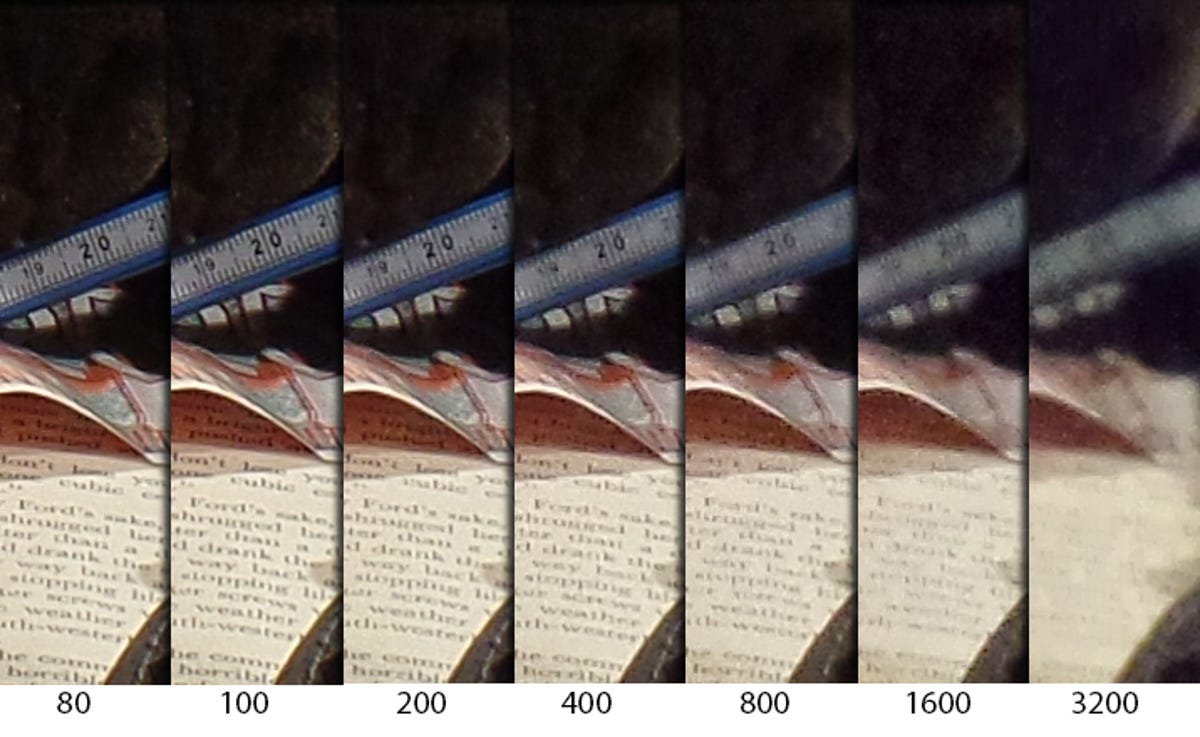
ISO comparison
These are 100 percent crops of photos of our test scene at each of the camera's available ISO settings. As with its predecessor, the WB250F, you'll want to consider this camera for its features more than its photo quality (or video quality, for that matter). If you need a camera that can take photos for prints larger than 8x10 in all lighting conditions or for something like birding where you'll want to enlarge and crop in to examine fine details, this likely won't be enough camera for you. The camera's strengths are in its novel shooting options.
Like many point-and-shoots with its price and features, the WB350F does well up to ISO 400, so you'll be able to get good-looking shots when you have plenty of light. Photos get noticeably softer from noise reduction at sensitivities above ISO 400; going above ISO 800 isn't recommended as you lose too much detail and colors desaturate. That said, the built-in flash is actually useful since it can be angled up and bounced, getting you better results than you'd have without flash or with a blast of direct light that you'd get from other camera flashes. Well, as long as you're not too far from the surface you're bouncing off.
Zoom range
Rich Tones
Light Trace
Waterfall
ASM modes
Magic Plus mode
Full-resolution sample
This and the remaining slides can be downloaded at full resolution via the links below each image. Note, though, that these are large files and may take several take some time to download or open.

